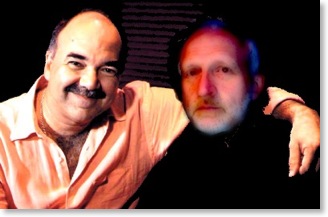Quasiton
26 September 2009 Filed in: Music

Listen to Quasiton
Carlo Serafini: piano, composer
Irina Alfresco: bass
Peter Erskine: drums
This song is part of my personal farewell celebration of the Halberstadt keyboard (see also Will I ever bid farewell to Halberstadt? and Goodbye Halberstadt). This process, as you can see, has been going on for more than one year now.
“Quasiton” was composed more than 10 years ago on an Atari computer.
I had recorded a free improvisation on my sequencer that was, afterward, edited up to the smallest detail, in order to give it a “recognizable” structure.
You can notice (after a few listen) that there are sections that get repeated throughout the piece, small musical sentences that are being played on different registers for “call and response” effects and other compositional devices. Phrases are alternatively exchanged between the piano and/or the bass (canon style).
If improvisation is sometimes called "instant composition", this composition could be called "dissected improvisation”.
I had wanted to do a newer version of this song for a long time and now the time has come.
On my website you can find another version of this song I had created, a few years ago, with Propellerhead Reason to partecipate to a contest for which it was required to create a song only with Reason sounds (no audio samples were allowed). Fortunately I still have that version because I can not find the original one anymore (I searched backup CDs and old floppy disks to no avail).
I took the Reason file, exported it as midi file and imported it into Logic Pro.
I kept the piano and bass lines only. The piano is now played by my Nord Stage 88 Rev.C and the bass by Logic’s EXS24 sampler. For the drum part I had the idea to use a library by Peter Erskine (Living Drums! by Sampleheads). I chose a long sample that was at 310 bpm, imported it into Apple Loops Utility in order to make it “time-stretchable”. The original file by Peter Erskine has been chopped up to fit the requirements of this piece. The original tempo of the song was 240 bpm. I increased the tempo to 290 bpm to make the digital artifacts of time stretching less evident and also because it gives an impracticable and fictional character to the piece. I have also created a new finale.
I have always been proud of this song (only my Muse knows how I could come up with a free improvisation like this one!). Now more than ever before: this is the ultimate example of post-jazz bebop-o-tronics!


